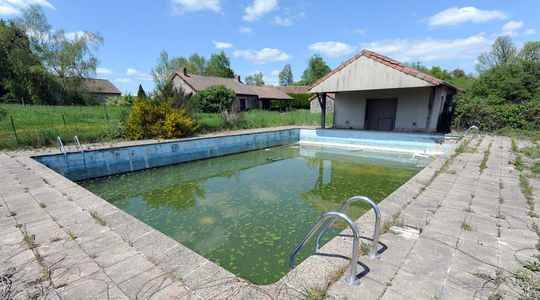What if you became the owner… Of a hamlet? If you cherish this slightly crazy dream, it seems easy to find your happiness in a few clicks on the Internet. But the offer is rare, if not extremely rare: a dozen ads, spread across France, present your next possible dream home. An “authentic Provençal stone hamlet” for one, nestled in the heart of 5 hectares of Luberon. Another for sale in the Aveyron, with 7 houses on its 8 hectare land. Or a “charming hamlet” with a view of the Mediterranean Sea, near Sanary-sur-Mer: three hectares, three separate buildings. To qualify for one of these three residences, count between 409,500 euros and 2.2 million. A price sample to treat yourself to a slice of the French countryside that is often well preserved and, above all, popular. Because unlike our Spanish neighbors for whom the rural exodus has often resulted in the abandonment of many small villages that have fallen into ruin, these pieces of France have long been a source of covetousness.
Few real estate agencies have precise data on these plots sold, the characteristics of which vary according to the departments. Yves Gaonach, deputy director of the New Aquitaine Land Development and Rural Establishment Company, an organization specializing in rural land, observes “generally properties far from agglomerations, access to which is a little more complicated than from ‘ordinary.” Prices vary to afford this little corner of paradise. The expert thus estimates that it may be possible to find hamlets whose cost ranges between “60,000 and 500,000 euros”. “These prices are not necessarily the highest on the market due to the decline in population that we observe in the territories,” he explains.
A micro-market
On the other side of France, in Provence, Amélie Gervais-Ducau, manager of Couleur Luberon Immobilier, describes a larger price range. “In our region, a hamlet can be expensive, she explains. Restored, one of them cost around 12 million euros.” The offers listed by Hervé Morvière, manager of three real estate agencies in the national network l’Adresse in Agen, are generally “twenty minutes from the city”. “Customers want both to be calm, without disconnecting from the transport networks, these offers are rare, but exist in the department”, he explains, noting an acceleration of the market “over the past three years. “. “There is about one hamlet for sale per year and per department over the past ten years, described for his part Yves Gaonach.
A micro-market, far from the thousands of abandoned hamlets in our European neighbours. There would thus be nearly 120 hamlets for sale in the Asturias region alone, in the north-east of Spain, and more than 3,000 throughout the country. A direct consequence of the rural exodus started 70 years earlier, and still ongoing in some Iberian regions. “In France, the phenomenon of rebalancing between the rural and urban world has been very gradual, explains Pierre Cornu, historian and university professor. The exodus started in the middle of the 19th century, increased after the Second World War, before fading away.” Unlike Spain, where entire areas are still abandoned, the population of France has been able to reclaim the countryside. “From the 70s and 80s, there was a movement of rural renaissance, with a return of certain communities to places a little far from the city centers”, continues the historian.
The arrival of the “neo-rurals”
The first abandoned hamlets, generally former farms, were then purchased by individuals. Acquired and restored before the end of the 20th century, most of the hamlets available on real estate ad sites therefore already belong to sole owners. Today’s sellers are therefore often yesterday’s “neo-rurals”. “People are selling large properties bought when they were young, which they have renovated. They have now become too tired to maintain and operate this type of property, and prefer to part with it”, describes Hervé Morvière.
Many of today’s potential buyers are in turn new rural dwellers. “They are often friends who want to set up a project together, to recreate something in community”, describes Yves Gaonach. These young people can be “in professional retraining” and turn to agricultural horizons, notes Claire Delfosse. This desire to go green is also shared by rather well-to-do city dwellers, attracted by the bucolic term of “hamlet” which makes people dream. These lovers of stone are however quickly confronted with another reality of the hamlets. “It is often necessary to consider restoring the property at the time of its purchase, which can very quickly increase the costs, points out Ludovic Garaiche. Take a hamlet whose building is 700 square meters, the work will easily exceed 700,000 euros. .. In addition to the amount paid to buy it.” A substantial cost, which can discourage more than one… If the quest length hasn’t already.
